Content
You can also integrate your accounting tools with an expense management software like Fyle. This will streamline your payroll expense management for timely, efficient, and accurate payroll work. To do so, you must first decide how you like to compensate your employees.
What does basic accounting include?
Basic accounting concepts used in the business world cover revenues, expenses, assets, and liabilities. These elements are tracked and recorded in documents including balance sheets, income statements, and cash flow statements.
Payroll is a major expense for most businesses and is almost always deductible, meaning the expense can be deducted from gross income lowering the company’s taxable income. Payroll can differ from one pay period to another because of overtime, sick pay, and other variables. Hourly-paid employees receiving wages are often paid weekly or biweekly. Due to the extra time needed to make calculations for each employee, hourly-paid employees typically receive their paychecks approximately five days after the work period has ended.
Deduct Taxes (FICA, Unemployment, and Income Taxes)
This will help keep them happy and let them concentrate on doing their work. The method we’ll use is similar to the procedure outlined in the first method on this list (Separate Hours). For instance, individuals must handle complex data entry and manipulation tasks.

Once the company purchases the software, there are no additional monthly fees. Software programs usually include printable tax forms and withholding tables. With respect to disadvantages, when companies outsource their payroll system, they must rely on individuals outside the business for accurate accounting. In the event of an error, the company’s on-site personnel must deal with upset employees. Companies might also face tax penalties for errors made by the payroll service.
Follow relevant laws and regulations
Whatever industry your business is in, the best accounting software can improve your understanding of your payroll accounting and its impact on your bottom line. Accounting for payroll has become much more complex due to these regulations. If you’re an employer, you can’t just be on your merry way after paying your employees. To ensure your accounting books are accurate, learn how to record payroll transactions. Federal regulations apply to all businesses, while state regulations vary.
- However, software programs can be time-consuming, which can pose a problem for small companies with few staff.
- This website is using a security service to protect itself from online attacks.
- Also, it allows you to determine the cost of hiring more full-time employees, part-time workers, consultants or freelance contractors.
- Notify your direct deposit processor of the amount of any direct deposit payments, and issue remittance advices to employees for these payments.
- Reduce processing time and eliminate errors by automating your payroll using our payroll accounting software.
Thus, most companies have HR manage payroll and related issues. However, some companies may house payroll inside of the finance or accounting department, and some larger companies may even carve out a distinct payroll office. Once you have https://accounting-services.net/small-business-bookkeeping-services/ taken out pre-tax deductions, the remaining pay is taxed. The FICA tax rate is 7.65%—1.45% for Medicare and 6.2% for Social Security taxes. Other tax rates will be determined by Federal, state, or local laws and your employee’s W-4.
Essential Payroll Reports
The government also charges taxes on the employee’s income, so these are the taxes employees actually see on their paycheck (like the state income tax), and so impact take-home pay. These taxes are withheld from each paycheck and also sent directly to the government. Most the taxes paid are through paychecks, so a large part of payroll accounting is properly accounting for all taxes. Payroll taxes include Social Security, which takes out 6.2% of your income up to $132,900.
- Please note that this is not an exhaustive list of how to do payroll.
- Before you calculate any taxes, brush up on state and local payroll laws.
- Employers track the number of hours each employee works and relay this information to the payroll service.
- Calculate taxes and deductions to find out how much you need to withhold from employee wages and contribute as an employer.
- Processing an error-free payroll is the key to keeping your employees happy and boosting the productivity of the organization.
- The calculation of payroll is highly influenced by each country’s legal requirements (it may also depend on state or local city requirements).
- Note that you must set aside enough cash to meet payroll obligations accurately and in a timely manner.
Summarize the wage and deduction information for each employee in a payroll register, which you can then summarize to also create a journal entry to record the payroll. This document is automatically created by all payroll software packages. Now that you have an estimated amount, research the market and figure out the cost of acquiring payroll software instead.
Paying Taxes vs Withholding Taxes
Once you’ve set up your payroll accounting system, you can process payments yourself or through a third-party payroll service. You can also run reports that break down your expenses by category and make it easier to prepare tax filings and other forms. Payroll accounting is very different from other types of accounting, such as financial and managerial. Like financial accounting, payroll accounting involves recording and categorizing company transactions, but it focuses exclusively on employee-related expenses. Unlike managerial accounting, payroll accounting requires no complex analysis on which to base business decisions.
The payroll service may also maintain a record of how much vacation or personal time employees have used. A well-oiled Accounting For Startups: Everything You Need To Know In 2023 system is crucial for paying workers promptly and accurately. It enables you to stay on top of what you owe your employees and involves everything from employee salaries to benefits or taxes. It is quite common to have some amount of unpaid wages at the end of an accounting period, so you should accrue this expense (if it is material). After recording this entry, you reverse it at the beginning of the following accounting period, and then record the actual payroll expense whenever it occurs.
